
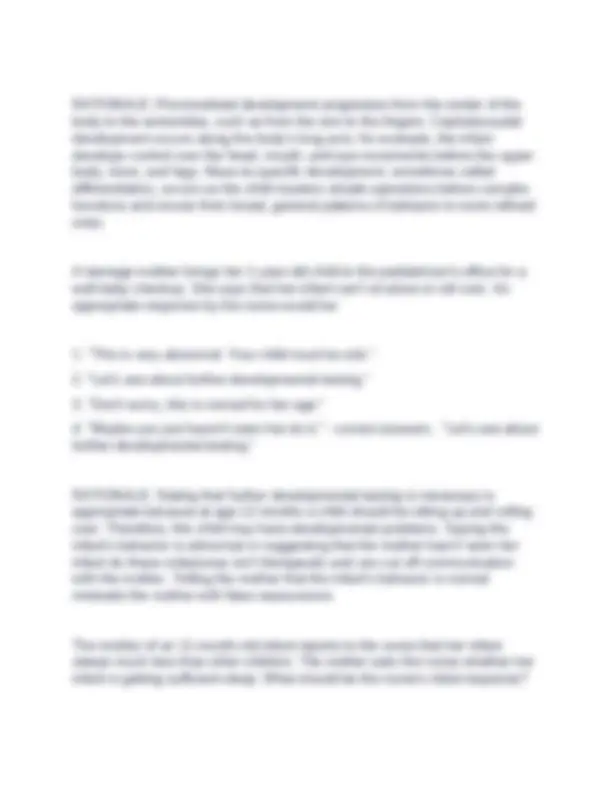
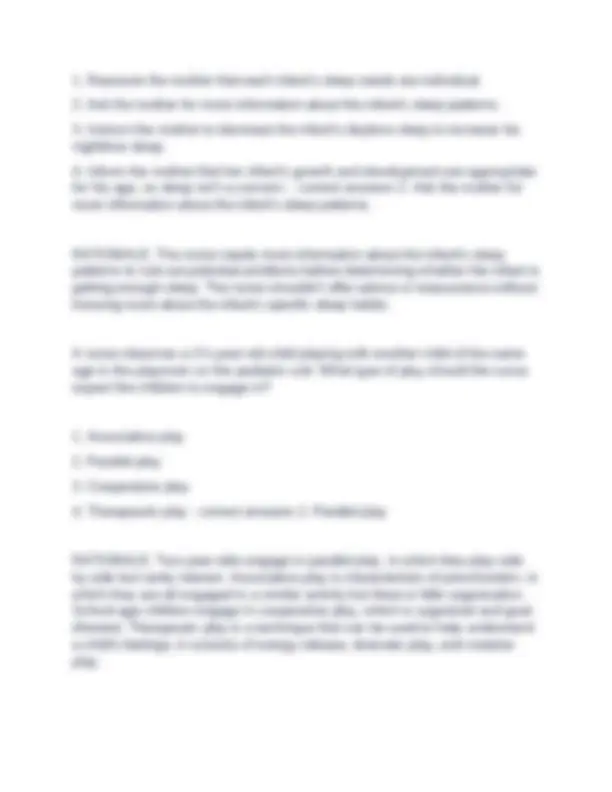
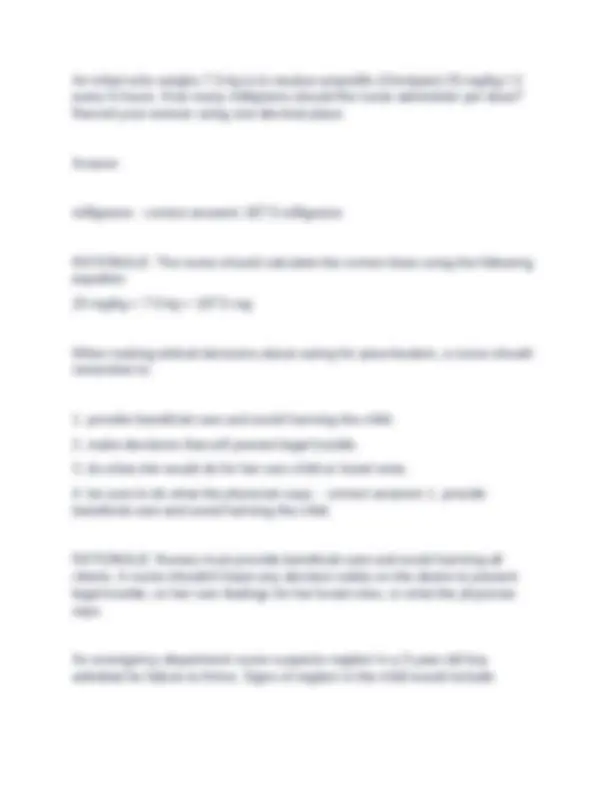
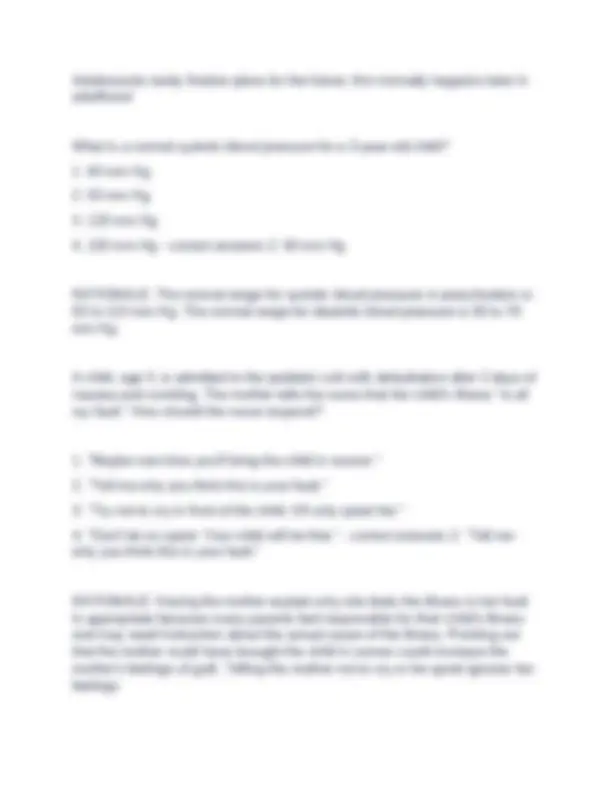
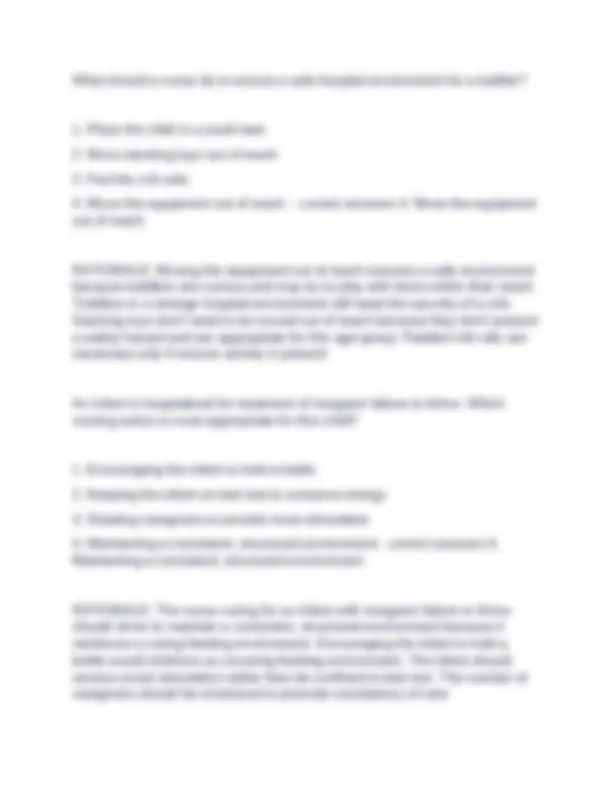
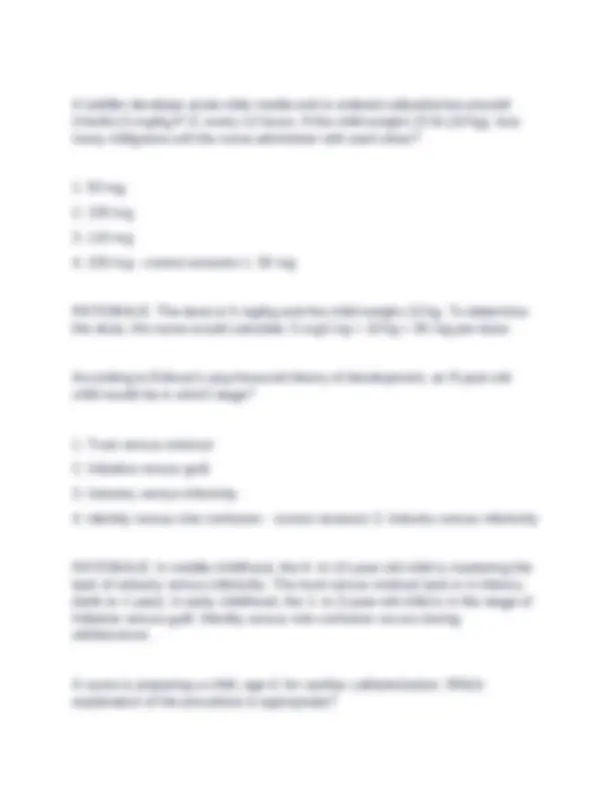
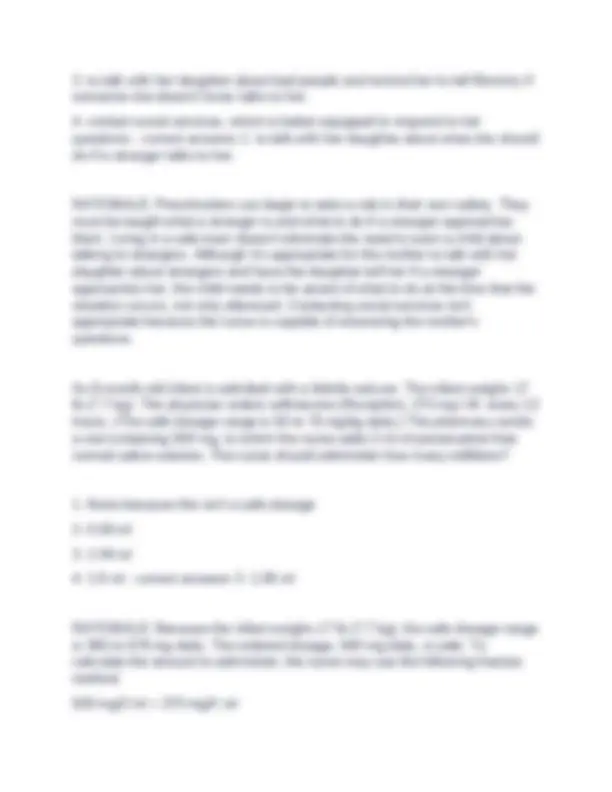
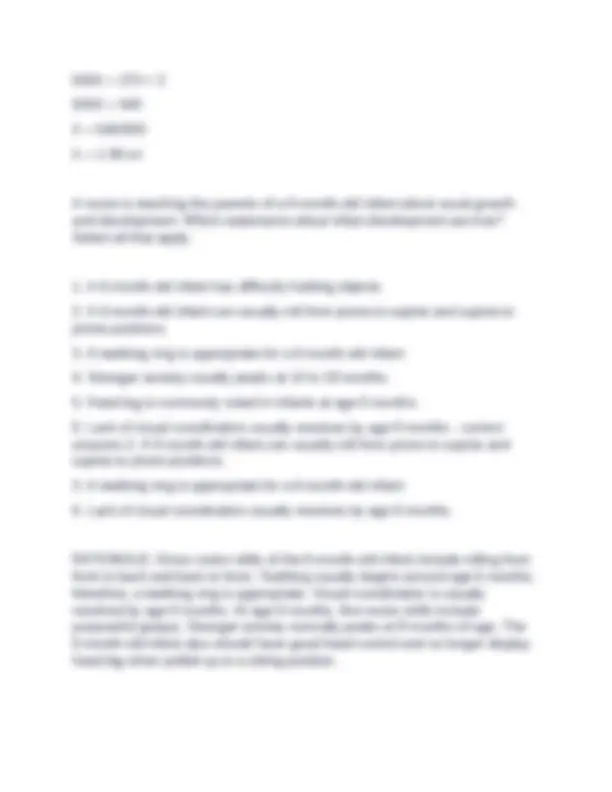
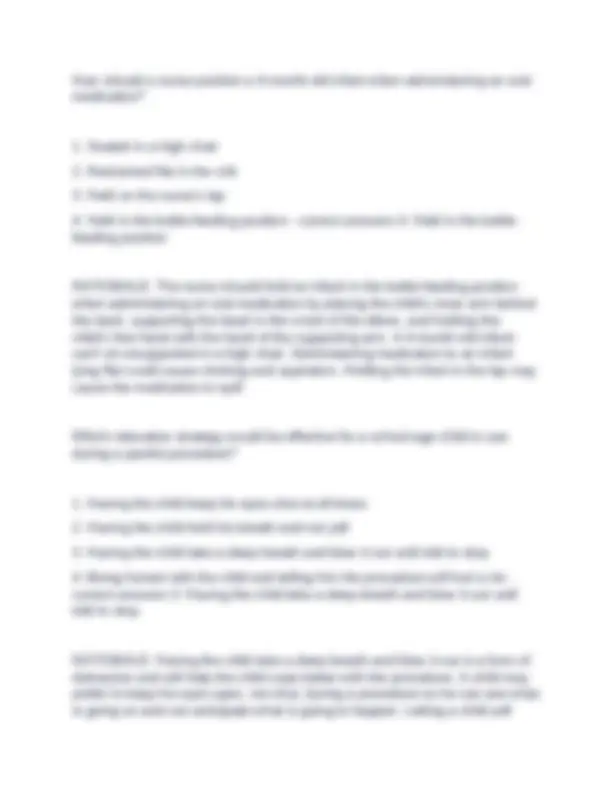
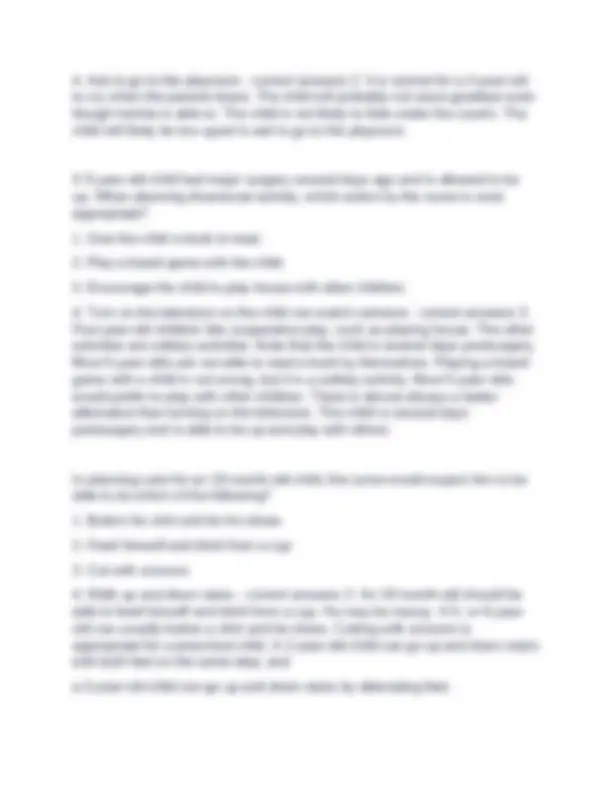
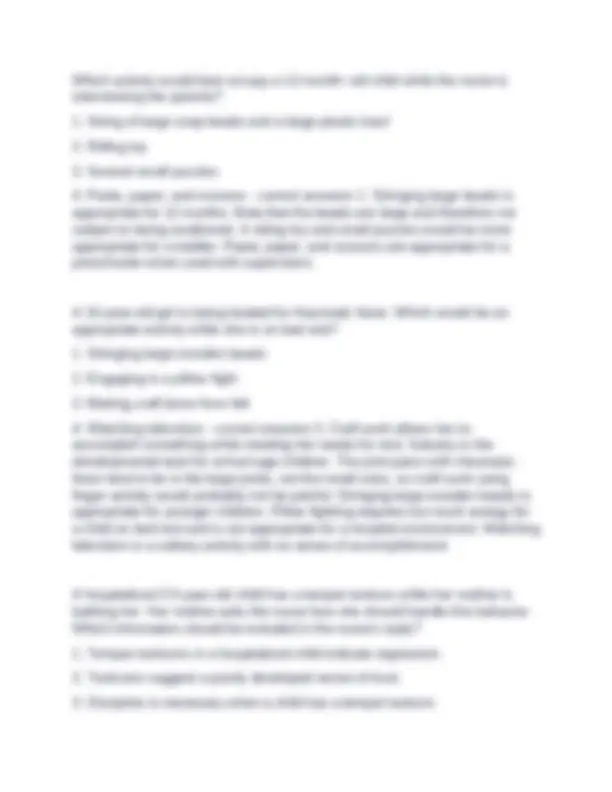
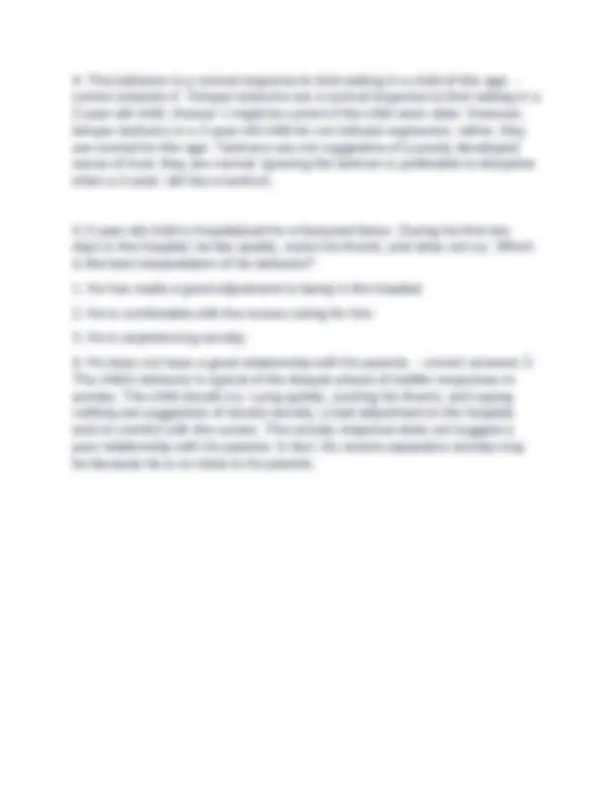


Study with the several resources on Docsity

Earn points by helping other students or get them with a premium plan


Prepare for your exams
Study with the several resources on Docsity

Earn points to download
Earn points by helping other students or get them with a premium plan
Community
Ask the community for help and clear up your study doubts
Discover the best universities in your country according to Docsity users
Free resources
Download our free guides on studying techniques, anxiety management strategies, and thesis advice from Docsity tutors
Peds Exam 1 NCLEX style questions with complete solution 2025
Typology: Exams
1 / 20

This page cannot be seen from the preview
Don't miss anything!













To establish a good interview relationship with an adolescent, which strategy is most appropriate?
RATIONALE: The school-age child is becoming industrious and attempts to master school-related activities. Therefore, school absences are likely to cause extreme anxiety for a school-age child who's chronically ill. Mutilation anxiety is more common in adolescents. Anticipatory grief is rare in a school- age child. Fear of hospital procedures is most pronounced in preschool-age children. When developing a care plan for an adolescent, the nurse considers the child's psychosocial needs. During adolescence, psychosocial development focuses on:
An infant who weighs 7.5 kg is to receive ampicillin (Omnipen) 25 mg/kg I.V. every 6 hours. How many milligrams should the nurse administer per dose? Record your answer using one decimal place. Answer: milligrams - correct answers 187.5 milligrams RATIONALE: The nurse should calculate the correct dose using the following equation: 25 mg/kg × 7.5 kg = 187.5 mg When making ethical decisions about caring for preschoolers, a nurse should remember to:
Adolescents rarely finalize plans for the future; this normally happens later in adulthood What is a normal systolic blood pressure for a 3-year-old child?
A toddler develops acute otitis media and is ordered cefpodoxime proxetil (Vantin) 5 mg/kg P.O. every 12 hours. If the child weighs 22 lb (10 kg), how many milligrams will the nurse administer with each dose?
X = 1.08 ml A nurse is teaching the parents of a 6-month-old infant about usual growth and development. Which statements about infant development are true? Select all that apply.
during a procedure is a form of helpful distraction. In addition, holding the breath isn't beneficial and could have adverse effects (such as feeling dizzy or faint). The nurse should prepare a child for a procedure by using nonpain descriptors and not suggesting pain. For example, the nurse might say, "Sometimes this feels like pushing or sticking, and sometimes it doesn't bother children at all." A school-age child presents to the office for a routine examination. Given the child's developmental level, a nurse should give highest priority to:
Which activity would best occupy a 12-month- old child while the nurse is interviewing the parents?